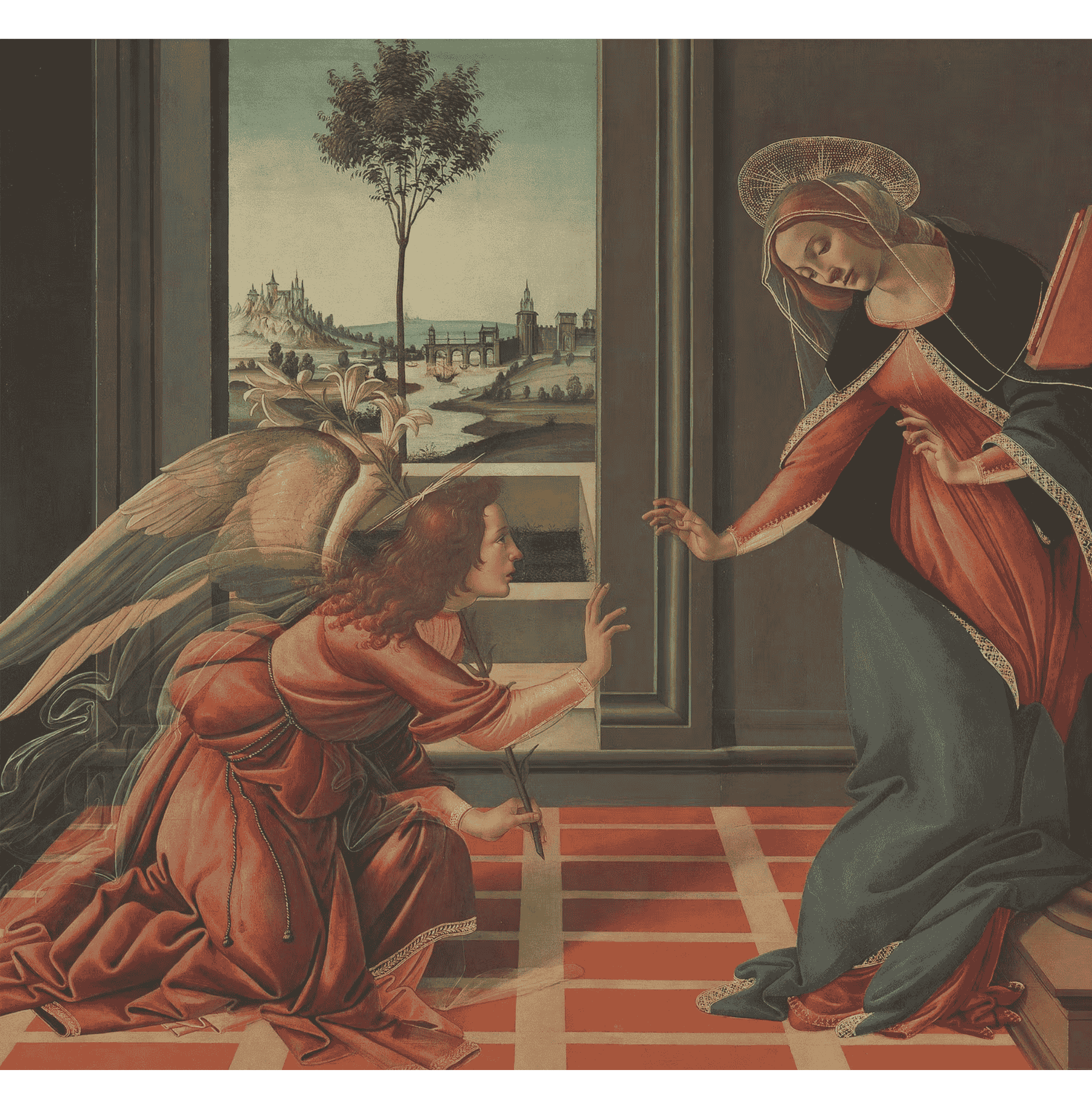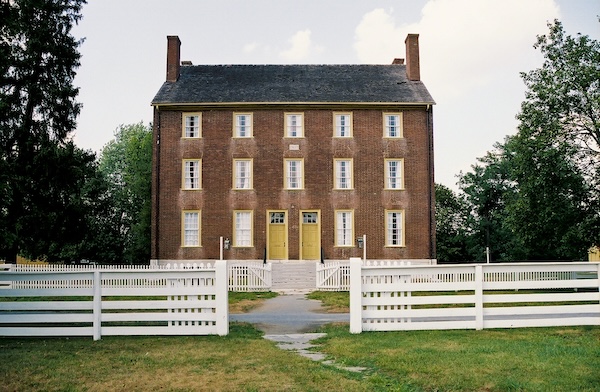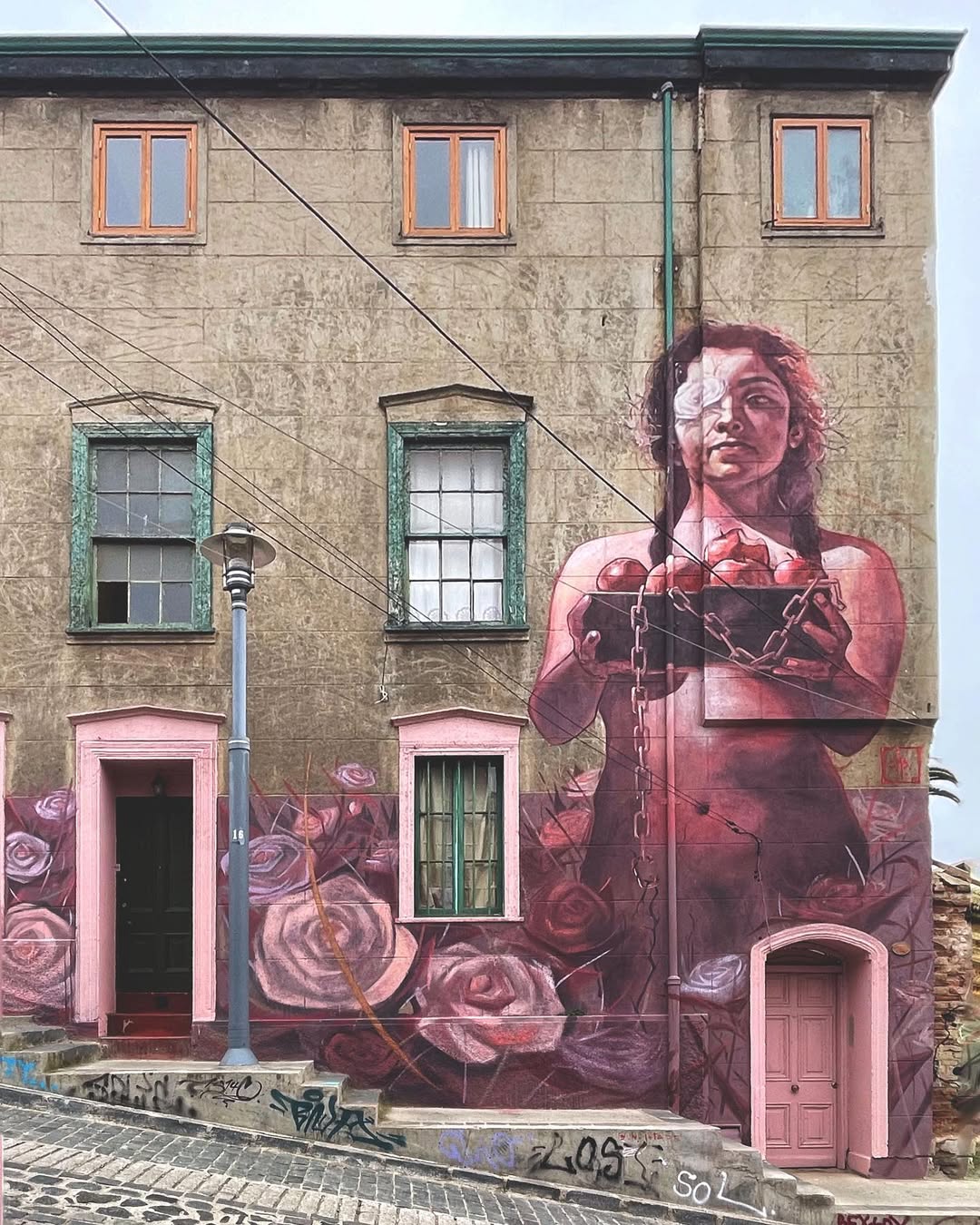
‘As warm water shatters at birth’
Water is a multivalent symbol in the Bible, an agent of both life and death, and Bill Viola plays upon these paradoxical meanings, as well as on iconographies of Christ, in his video art piece Emergence. Created in 2002, Emergence shows two women sitting on either side of a large marble receptacle, each absorbed in her own grief. Then, to their surprise, a man starts rising up out of it, pale and nude, unleashing a cascade of water. He stands at full height, then totters and falls; the women catch him and help him gently to the ground. They then cover him with a cloth, one overcome by tearful emotion, the other tenderly embracing his body. These actions unfold silently in extreme slow motion over a span of eleven minutes and forty-nine seconds.
Like so many of Viola’s works, this one thrives on allusiveness and resists a literal reading. Viola urges viewers to consider all angles:
If I look at this from the point of view of our contemporary eye, it’s the aftermath of a drowning: these two women pulling a limp, lifeless figure out of water. If I look at it with the inner eye, what I see is a birth, of water overflowing and a young man who’s practically naked being taken out by women, almost in the function of midwives, of bringing a being into the world.
Art needs not be an either-or proposition; both-and readings are welcome. In Emergence I see both death and birth. Christian tradition holds these two phenomena closely together, especially in the experience of conversion, in which we put to death our old self and enter into new life in Christ. Might the video, then, be read as a new self emerging as the old self is dying (the actor playing two parts)? The church regularly enacts this burial of the old man and rising of the new in the rite of baptism, which harks back to Christ himself, who “went under” in death only to rise in glory (Romans 6:3–5).
Therefore, if the work marks the emergence of the born-again believer from the waters of baptism, it also marks the emergence of Christ from his tomb, which was itself a womb of sorts. Jesus was laid in the belly of Earth, and after she gestated for a mere three days, life burst forth from her. The rushing water evokes the rupturing of an amniotic sac, signaling a birth in process. Mary Karr uses a similar image in her poem “Descending Theology: The Resurrection”: on Easter Sunday, breath “spilled” into Jesus’s entombed body, and “ it’s your limbs he comes to fill, as warm water / shatters at birth, rivering every way.”
For his projects Viola often culls inspiration from Renaissance art, and Emergence is no different. He said it is a response to Masolino da Panicale’s fifteenth-century Pietà, which shows the dead Christ being propped up at half-length in his tomb by his mother and John—a standard composition at the time commonly known as the Man of Sorrows. Viola doesn’t care to restage older paintings, he says; what interests him is what happens when images go into us and live there and grow and transform into other things.

Masolino’s fresco visualizes a moment of grief, an emotion Viola is keen to explore, but Viola takes it further, wrapping it up with the surprise of joy as the two waiting women behold a miracle. The sequence is somewhat confounding, as the man first rises from the tomb and is then laid on the ground at the end and covered with a cloth, supposedly for burial. First, the Resurrection, then the Man of Sorrows, then the Lamentation—an order reversal of three familiar religious tableaux. Again, Viola is working nonliterally. The revised story sequence could simply be him rewinding time (in addition to decelerating it), a form of play.
Not only does the central set object function simultaneously as a sarcophagus and a baptismal font, it could also be a wellhead. “Spring up, O well!” sang the Israelites in the wilderness, and the Lord gave them water (Numbers 21:17). “Truth shall spring out of the earth,” sang the psalmist (Psalm 85:11a), anticipating Christ. When Jesus encountered a Samaritan woman at Jacob’s well, he famously told her that if she wanted, he would give her “living water” that would quench her every thirst (John 4:1–35; cf. John 7:37–39). The language of wells and springs of life found throughout scripture are called up here, grafted into the context of resurrection and rebirth.
**********
This meditation was abridged and adapted from an essay originally published in 2014 at theJesusQuestion.org. Quotations by the artist are taken from the 2003 short film “Bill Viola and the Making of Emergence,” dir. Mark Kidel.
Bill Viola: Emergence (still frame), 2002, from The Passions series. High-definition video master tape. J. Paul Getty Museum, Los Angeles, California, USA. http://www.getty.edu/art/collection/objects/184037/bill-viola-emergence-american-2002/ (see nine other stills)
Bill Viola (American, b. 1951) is a pioneering video artist whose work explores the power and complexity of human emotion and whose aesthetic is informed by medieval and Renaissance devotional art. One of his trademarks is the use of ultra-slow motion to draw attention to his characters’ nuanced expressions and movements. His works focus on universal human experiences – birth, death, the unfolding of consciousness – and have roots in both Eastern and Western art as well as spiritual traditions, including Zen Buddhism, Islamic Sufism and Christian mysticism. His quiet, contemplative works are widely exhibited in churches—most recently his Three Women at St. Cuthbert’s in Edinburgh. In 2014 Viola’s Martyrs altarpiece in St. Paul’s Cathedral became the first permanent installation of a video work in a British church, and it was joined by Mary in 2016. https://www.billviola.com/
Victoria Emily Jones lives in the Baltimore area of the United States, where she works as an editorial freelancer and blogs at ArtandTheology.org. Her educational background is in journalism, English literature, and music, but her current research focuses on ways in which the visual arts can stimulate renewed theological engagement with the Bible. She serves on the board of the Eliot Society, a DC-based nonprofit that fosters discussions about the role of the arts in the life of the church, and is a contributor to the forthcoming Visual Commentary on Scripture, an online biblical art project being developed by King’s College London.
ArtWay Visual Meditation 2 September, 2018
%20(1).png)












